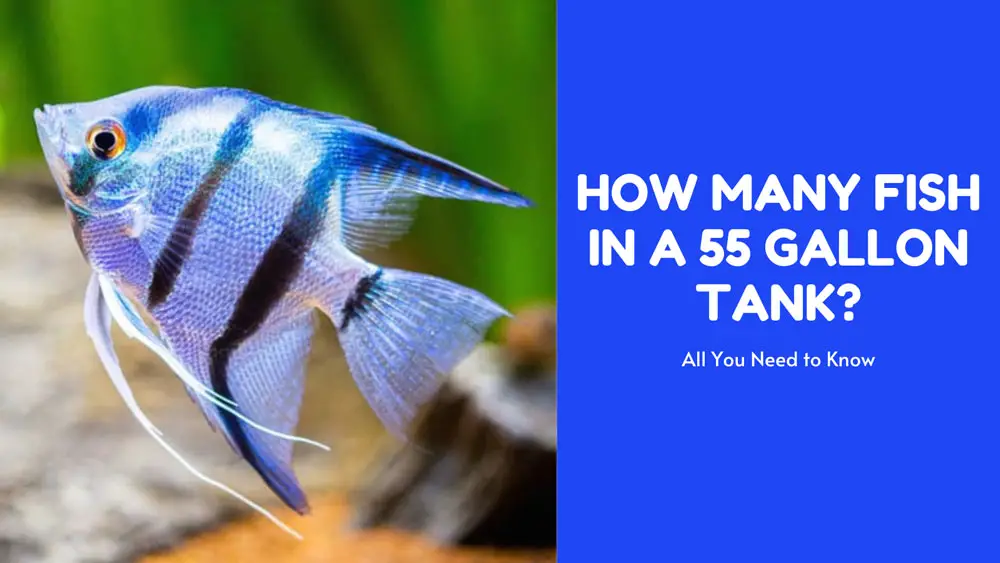It’s a golden question, as virtually every aquarist will eventually wonder how many fish can be put in there, no matter what size or type of aquarium they have.
The answer, unfortunately, is not as simple as a number. Instead, just like most things related to fishkeeping, it depends.
I understand this quick and easy answer is not very helpful, so let’s take a closer look at how to figure out how many fish your 55-gallon tank can safely hold.
One Inch Per Gallon
Chances are if you become interested in having your own aquarium have already known this short “Rule of Thumb” to roughly calculate how many fish you can stock in your aquarium.
Basically, this rule recommends the number of fish to keep in any size tank is one inch of fish per gallon of water.
According to the rule, for a 55-gallon tank, you can have five 10-inch Oscar fish. Or how about nine 6-inches of full-bodied fantail goldfish?
Sounds simple enough, right? Wrong!
The debates have raged on for years as to whether or not this rule is accurate. Some believe it’s a good starting point for those interested in a planted tank with small-bodied community fish like livebearers, danios, tetras, etc. Some consider that it’s completely misleading and does more harm than good.
I tend to fall in the latter group. Most times, this rule is oversimplified and can lead to dangerous conditions in your aquarium, especially when applied to large-bodied or predatory fish.
The Issues of the One-Inch-Per-Gallon Rule
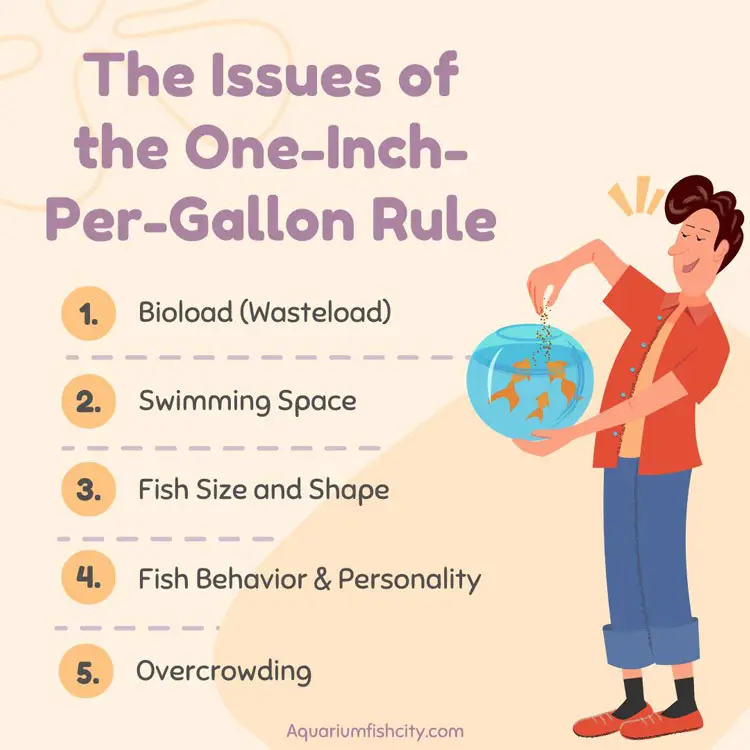
Now that you know this simple math rule is not your answer to stocking your 55-gallon aquarium, let’s talk about some of its issues.
Biochemical Load
Fish produce waste. It’s a fact of life, and there is no getting around it. The bioload refers to the waste in your aquarium water and how well the natural processes can deal with it.
In aquariums, live plants and bacterial colonies help to break down this waste and convert it into less harmful substances. But these processes take time, and there is always a risk of ammonia and nitrite spikes if the bioload becomes too much.
Although a 55-gallon fish tank is considered a “large” aquarium, it’s still a closed system. The more and bigger your fish are, the slower this process will be.
The Importance of Swimming Space
In the wild, fish have plenty of room to swim around. They are not confined to a small glass box where they have to share space with other fish, plants, and decorations. This is particularly true for these schooling fish or active swimmers.
This lack of space can lead to stress in your fish, making them susceptible to disease. It can also cause aggression problems as some species will compete for territory.
Furthermore, fish not given enough space to swim will not develop their muscles properly, and their growth can be stunted. This might be the answer to questions such as “Why is my Oscar not growing?” or “Why is my Pacu so small?”
Fish Size and Shape
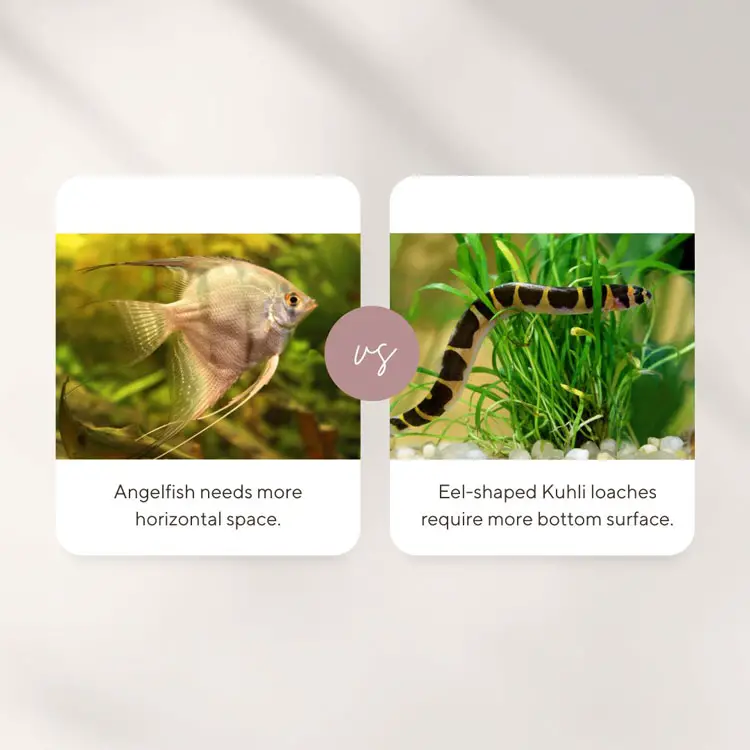
Just like people, fish come in different sizes and shapes. Some are very slender and long, while others are stout-bodied fish like many Cichlids. Not to mention, some species have long, wing-like fins, like the quintessential angelfish need more horizontal space.
Fish Behavior & Personality
Active swimmers or schooling fish should be kept in groups also render the rule useless. Keeping two or three fish in a 55-gallon aquarium will only lead to a shortened lifespan for species like Giant Danios or Silver Dollars.
Also, many barbs are notorious for being fin-nippers, like rosy barbs, tiger barbs, and black ruby barbs when not kept in large groups.
Believe it or not, personality [1] is another problem here. Oftentimes, the fish brought home have not yet reached full maturity. You have no way of knowing if you’ll get a kind and gentle cichlid who will coexist peacefully with others or a real monster that will terrorize other fish.
Overcrowding
Overcrowding is one of the most common problems of new owners. It’s also one of the leading causes of disease and fish death.
As you may know, overcrowding helps to keep aggression down in Mbuna aquariums. However, an experienced Cichlid keeper can successfully keep a school of 50 four-inch Mbunas in a 55-gallon aquarium. It would be a beginner’s nightmare to try this.
So How Many Fish can I keep in My 55-gallon Fish Tank?
As stated above, sorry, the golden rule doesn’t exist. There are, however, three very loose guidelines that you can use to determine how many fish you can keep in a 55 gallons aquarium.
#1 Surface Area
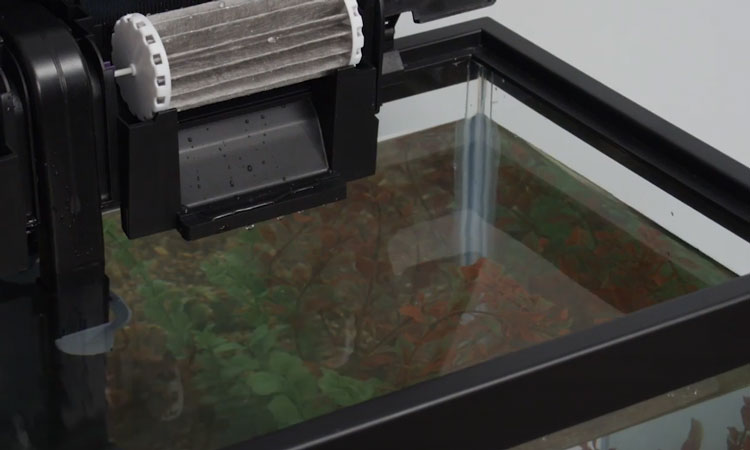
As compared with a 40g breeder (36″ x 18″ x 16″) or 75g aquarium (48″ x 18″ x 24″), the 55g aquarium (48″ x 13″ x 21″) has a smaller surface area for gas exchange because of its depth (13″). Obviously, this brings limits when stocking.
The swimming area is important to consider if you plan on keeping larger fish as your centerpieces. You can not house an adult Oscar or other large species that require at least 1½ times their body length in swimming space from front to back.
If you are interested in a peaceful community tank with small schooling fish that are approximately 1-3 inches in size, then the “one inch per gallon” rule is a reasonable yardstick as long as your filtrating system is effective, and you do weekly water changes.
In addition to standard rectangles, 55 gallons fish tanks may differ in shape, such as hexagons, pentagons, or even columned. If you have one of these, a safe rule to follow is one inch of fish per two gallons.
A 55-gallon aquarium is perfect for an African cichlid show tank, so I have picked my favorite cookie cutter setup here: African Cichlid for 55 Gallon Tank.
Lastly, be aware that your decoration, such as plants, rock work, and background, will also reduce the amount of space available for your fish to swim.
#2 Learning About the Fish
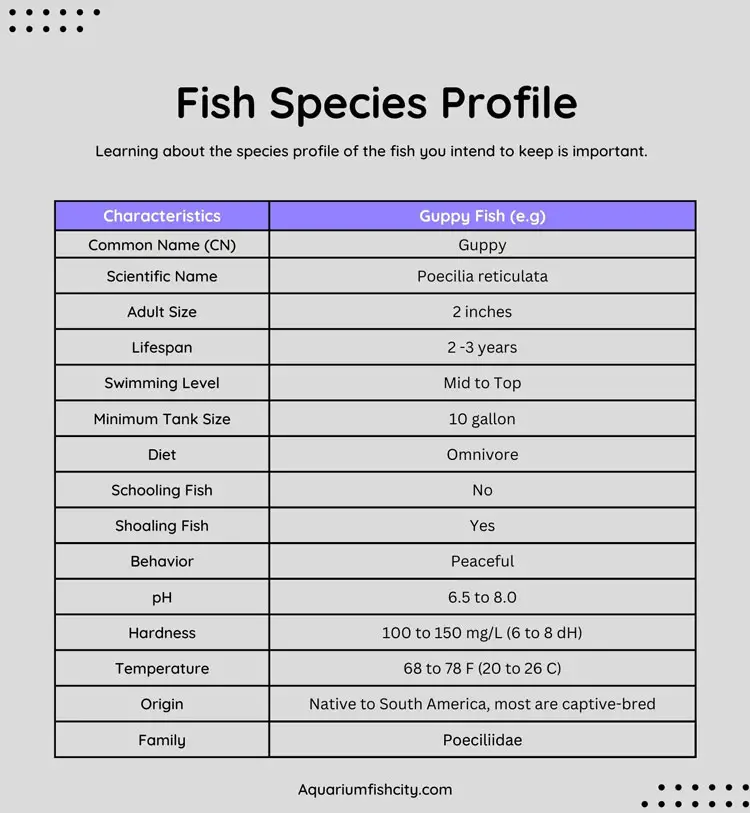
People who are new to owning aquariums tend to select fish based on appearance without being knowledgeable about their care requirements, such as how big they will get, how active they are, or how aggressive they might be when fully grown. This is one of the main reasons many people give up keeping fish altogether.
Therefore, before you purchase your fish, do your homework on the species you intend to buy. There are some factors to consider.
Fish Size
As we mentioned earlier, most fish you purchase are juveniles. Be aware that an adorable little common pleco, even if it is less than an inch long when bought from a store, will likely grow to be 15 inches in size when fully grown.
Bottom Line: Use the adult size of the fish to calculate.
Swimming Level
A 55-gallon fish tank is recommended for a community aquarium with different levels of fish. Potentially, you can house more fish in such a setup.
For a quick reference, here is a list of community fish, sorted by the level they prefer: Community Fish for 55 Gallon Tank
Bottom Line: Knowing the swimming level of your fish can help you build a far more attractive aquarium.
Water Conditions
Swimming levels matter, but the water condition is even more important, especially when combining them in a community aquarium.
Most importantly, you need to match the fish’s natural habitat as closely as possible. The water hardness, temperature, and pH all play vital roles in how well your fish will acclimate and how long they will live in your aquarium.
Bottom Line: Always research the water conditions of the fish you are interested in, and do not mix fish that prefer different water conditions.
Behaviors
Fish behaviors include mainly schooling behaviors and social behaviors.
Some species need to be in a group to feel comfortable. Ideally, you should have at least six of them, like barbs, danios, and most tetras. As a result, more space is required.
Similarly, Some species exhibit social behaviors and need to be in pairs or groups with a ratio of at least two females for each male to thrive. Also, they become stressed when alone, such as gouramis, swordtails, angels, platies, and cichlids.
Bottom Line: There’s no substitute for research when it comes to this.
Aggression Level
Another factor you need to take into consideration is the aggression level of your fish. Aggressive fish need a lot of swimming areas, as they will battle for territories.
Bottom Line: Also consider the aggression level of each species.
Dietary Needs
Many amateur fish owners often overlook the dietary needs of fish. This mistake can have deadly consequences when combining the wrong fish with different nutritional needs in the same tank.
There are three basic categories that fish can be classified into based on their dietary needs: carnivore, herbivore, and omnivore. Among these, omnivores are an excellent candidate for a community tank.
Bottom Line: Combine fish with similar dietary needs.
#3 Waste Load

In general, fish waste, detritus, decaying aquatic plants, dirty filters, uneaten fish food, and overstocking all contribute to increased levels of waste load in an aquarium. In turn, the waste load or bioload determines how many fish your aquarium can support.
There are four factors that will most impact your aquarium’s bioload.
Filtration
Filtration in an aquarium is always relative. We have talked about how to choose the right 55 gallon aquarium filter in detail.
But in short, you need a filter that should pass all the water of your aquarium 4-10 times per hour based on your stocking levels. Again, a one-size-fits-all “best” filter doesn’t exist, but rather a variety of filters that can be best utilized for different tasks.
Aquarium Plants
I cannot stress how important aquarium plants are in the overall health of your fish and in maintaining a biofilter. Aquatic plants consume nitrogen compounds, which is nature’s way of filtering toxins and impurities from water.
Remember, with more aquatic plants, the number of inches of fish per gallon can definitely exceed the rule.
Author note: Stem plants, floating plants, and other fast-growing plants generally remove nitrogen waste more quickly than slow growers.
Tank Maintenance
Maintaining a 55-gallon aquarium can take some work, but nothing is more rewarding than enjoying a well-kept aquarium with healthy fish. In addition, the more frequently you perform water changes, the faster your fish grow and the more fish you can have.
Weekly water changes of 20-30% should be sufficient to remove any dissolved waste and toxins that build up over time. I suggest using the API Freshwater Master Test Kit to test your water parameters weekly and to ensure that your ammonia, nitrites, and nitrates are all at safe levels.
[amazon box=”B000255NCI”]Overfeeding
Too much food brings about too much fish waste. Many things are associated with overfeeding, including chronic health concerns, clogged filters, algae bloom, ammonia spikes, and so on.
As a general rule, don’t give your fish more food than they can eat in five minutes or less. If you’re unsure, it’s better to underfeed them. Smaller, more frequent meals are better.
Let’s Summarize!
You can see the issues that following the simple rule to determine how many fish in a 55-gallon aquarium can cause.
Unfortunately, this rule is commonly followed in big-box pet stores when customers pick out fish. The employees are often poorly trained and give out conflicting information.
To avoid problems down the road, always do plenty of necessary research to choose fish wisely.
I hope this article was helpful and that you will think twice next time someone tells you how many fish for your 55-gallon aquarium. If you have any questions or suggestions, feel free to message us.
Article Sources:
- Do fish have personalities? [Aqueon]
- How to Stock an Aquarium With Different Levels of Fish [TheSprucePets]
